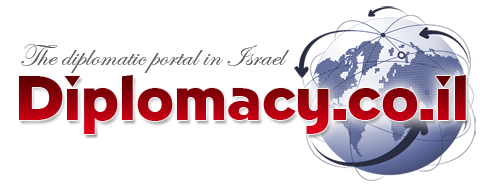Art & Culture
- Details
- Written by Silvia
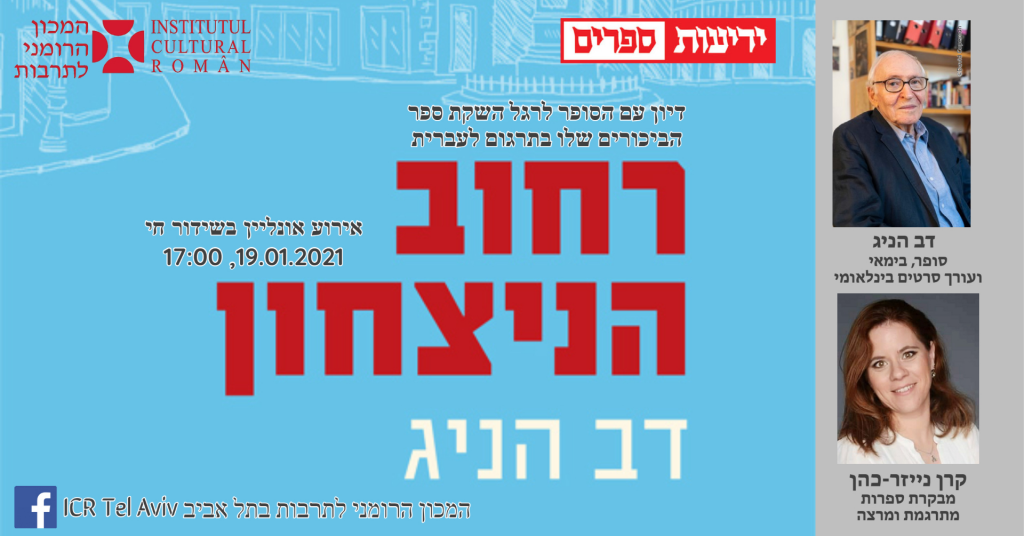
.“From Victory Avenue to Hollywood” - Dov Hoenig at Romanian Café online series
The Romanian Cultural Institute in Tel Aviv is honored to invite you to a new edition of Romanian Cafe online series, which will take place online on January 19, 2021, at 17:00, in Hebrew, with live streaming on our official Facebook page: https://www.facebook.com/icr.telaviv/
The event will be dedicated to the book launch of the Hebrew translation of the novel “Rue du Triomphe” by Dov Hoenig, renowned international film editor, director and writer. The book was published in Israel by Yedioth Books in December 2020.
The guests of the event, moderated by Martin Salamon – director of the Romanian Cultural Institute in Tel Aviv, will be the author of the novel, Doe Hoenig, together with Keren Neizer-Cohen, literary critic, translator and lecturer.
Inspired by his own childhood and adolescence in Romania, “Rue du Triomphe” is the first novel by Dov Hoenig, who, during his internationally acclaimed career as film editor and director, has worked with some of the most talented cinema professionals, such as Michael Mann and Andrew Davies.
The novel “Rue du Triomphe” was written and first published in French in 2018 byEditions Robert Laffont in Paris and was candidate for the prestigious Stanislas award (Prix Stanislas) for the best debut novel.
In "Rue du Triomphe", Dov Hoenig paints with a brush of an artist Bernard's world in Bucharest, his youth, aroused sexuality, his first love, his ambitions and despairs, and his parents' experiences in Fălticeni, a province town in north eastern Romania, in the turmoil years of WWI, into an original and captivating novel that presents humanity in all its facades with generosity, softness and humor.
Dov Hoenig has made Aliya to Eretz Israel as part of the Ha'Shomer Hatzair youth movement. Following several years in a kibbutz working in agriculture, he was drawn to the young Israeli cinema industry and has become a film editor, editing over 40 films, including
Israeli classics, such as "Cazablan" and "Operation Thunderbolt" ("Entebbe") by Menahem Golan, and "I love you Rosa", and "The House on Chelouchet Street" by Moshe Mizrahi. Hoenig later moved to Hollywood where he edited Michael Mann's films "Thief", "Man Hunter", "The Last of the Mohicans" and "Heat", as well as Andrew Davies' film "The Fugitive" – and became the first ever Israeli candidate to an Oscar award for editing “The Fugitive”.
At present, Hoenig is entirely dedicated to writing.
https://www.facebook.com/icr.telaviv
https://twitter.com/ICRBucuresti
https://www.youtube.com/user/ICRpromo
Institutul Cultural Român de la Tel Aviv
B-dul Shaul Hamelech nr. 8, 64733
Tel Aviv, Israel
Tel.: +972-3-696 17 46,
+972-3-691 12 05
Fax: +972-3-691 12 04
E-mail: This email address is being protected from spambots. You need JavaScript enabled to view it.
- Details
- Written by Silvia G Golan
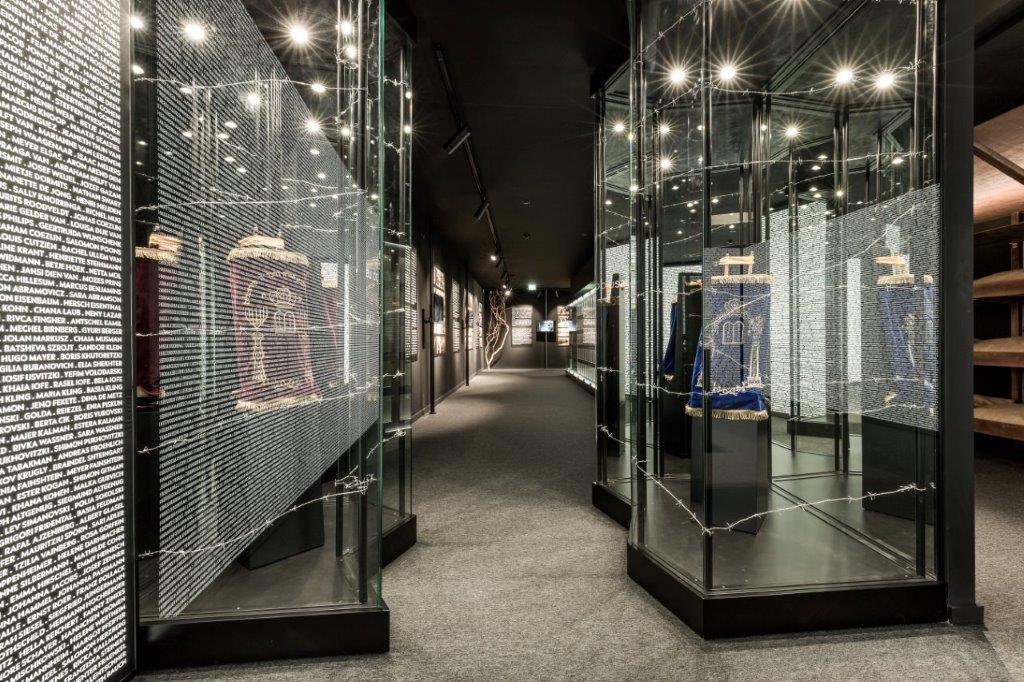
.Historic event: The first Holocaust Museum to be inaugurated in Oporto, Portugal.
On January 20th the new Holocaust Museum (presentation here: https://youtu.be/eg2mio5GbAA) will start with a sentimental ceremony, opened by Dias Ben-Zion, President of the Jewish Community of Oporto, and by Rui Moreira, Oporto’s Mayor.
It will be attended by the ambassadors of the countries that participated in the Second World War and Israel, Karel Fracapane (UNESCO Focal Point for Holocaust Education), Ambassador Luíz Barreiros (Head of the Portuguese delegation to the IHRA – International Holocaust Remembrance Alliance), Marta Santos País, commissioner of the Projeto Nunca Esquecer - Programa Nacional em torno da Memória do Holocausto (Never Forget Project – National Programme for Remembrance of the Holocaust), the Bishop of Oporto and the President of the Muslim community of this city. The Government will be represented by the Secretary of State for Culture.
The Oporto Holocaust Museum was created by the Jewish Community of Oporto and portrays Jewish life before the Holocaust, Nazism, Nazi expansion in Europe, the Ghettos, refugees, concentration, labor and extermination camps, the Final Solution, the Death Marches, Liberation, the Jewish population in the post-war period, the Foundation of the State of Israel, Winning or dying of hunger, The Righteous among Nations.
On 27 January 27th, to celebrate the International Day in Memory of Holocaust Victims, the Museum will be visited by a large number of students from schools in the region of Porto.
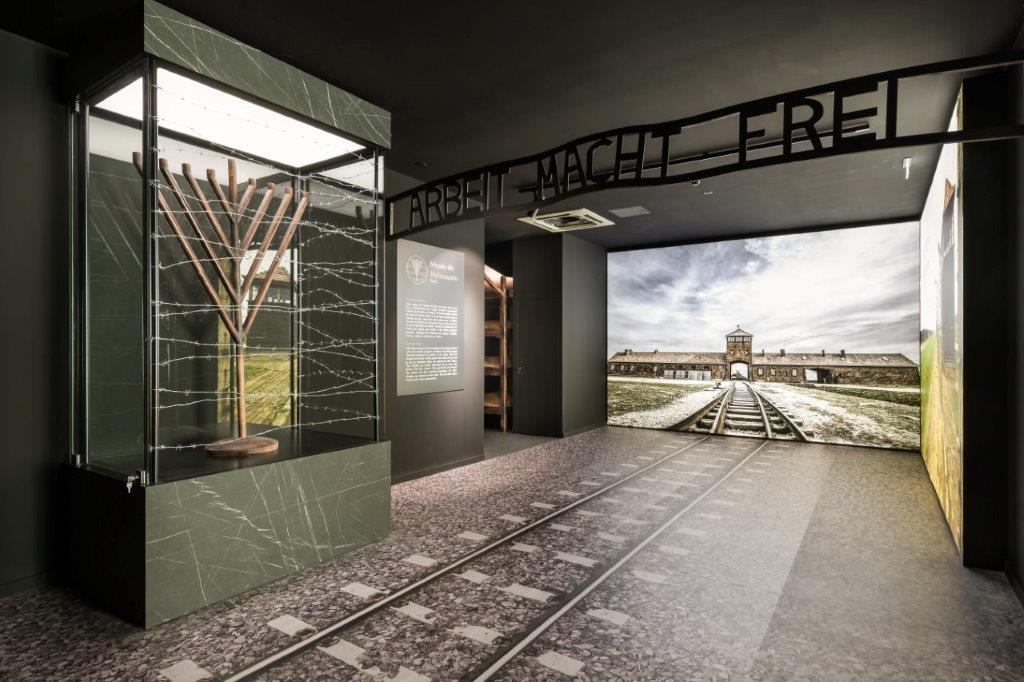
Under the auspices of members of the Oporto Jewish community whose parents, grandparents, and relatives were victims of the Holocaust, the Oporto Holocaust Museum will develop cooperation partnerships with Holocaust museums in Moscow, Hong Kong, the United States, and Europe, contributing to a memory that cannot be erased.
https://www.youtube.com/watch?v=eg2mio5GbAA&feature=youtu.be
Photos Courtesy:
the Jewish Community of Oporto
- Details
- Written by Silvia G. Golan
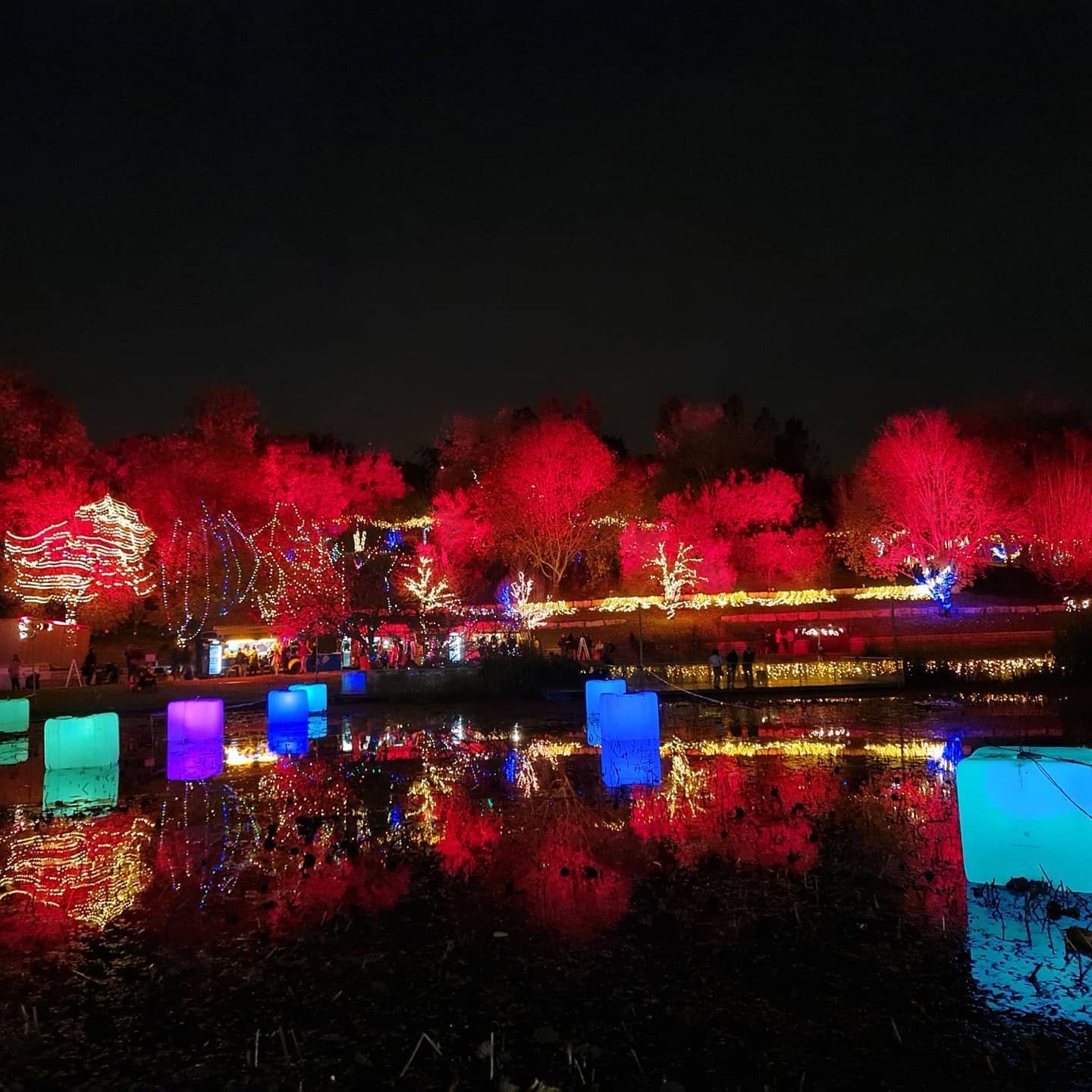
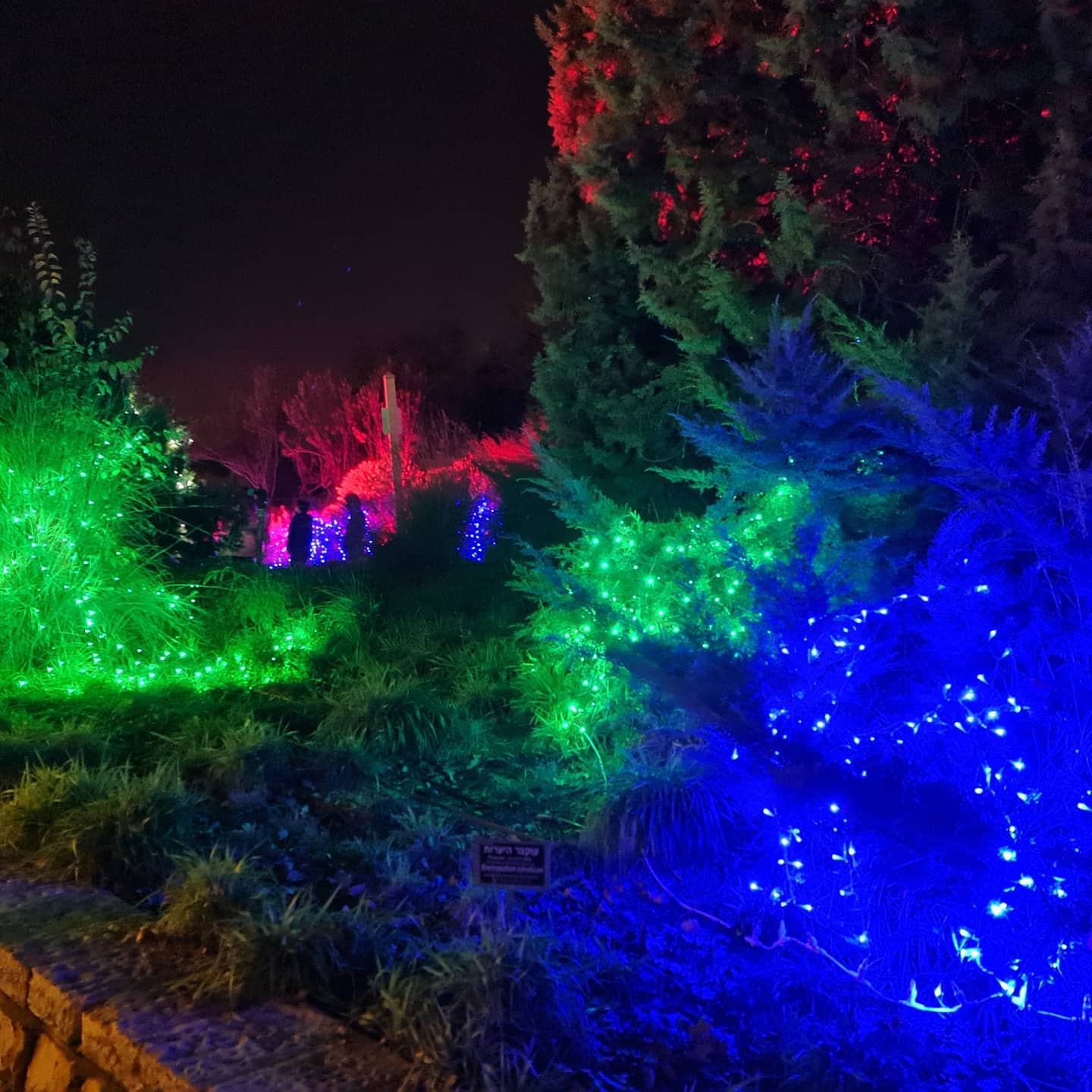
- Details
- Written by Silvia G. Golan
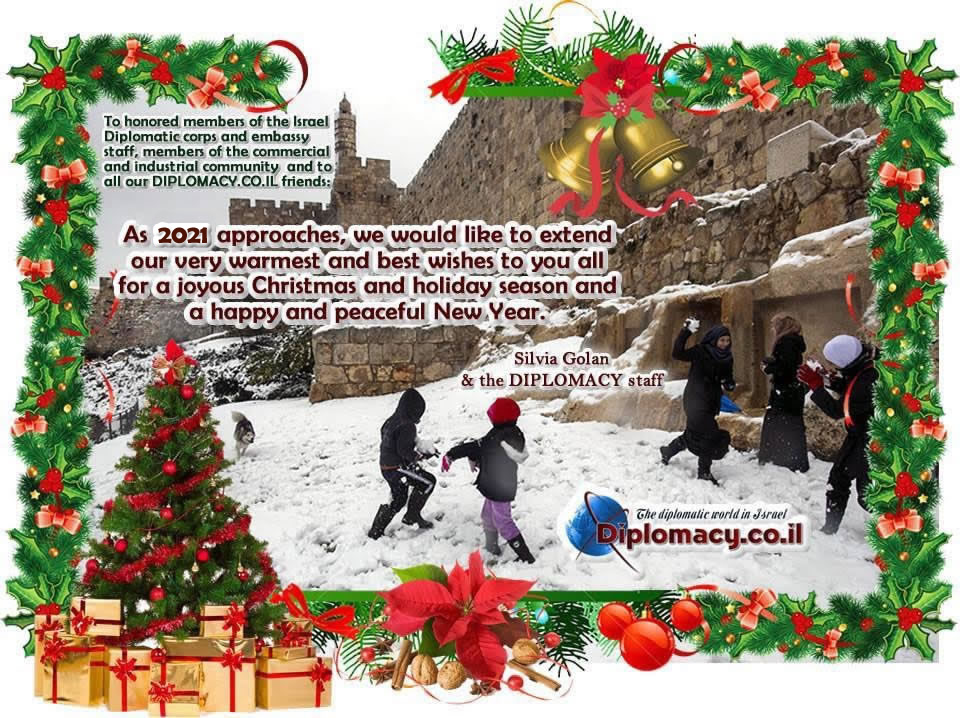
Merry Christmas 2020 and 2021 New Year Greetings
To honored members of the Israel Diplomatic corps and Embassy staff
members of the Government Offices, Cultural, Commercial
and Industrial community in Israel
and to all our www.diplomacy.co.il friends:
As 2021 approaches, we would like to extend our very warmest and best wishes
to you all for a joyous Christmas and Holiday Season
and a Healthy Happy and Peaceful New Year
Silvia Golan Daniel Schwarz
Steven Aiello Stella Szpira David Altman
Jonathan Danilowitz Pamela Hickman
& all the staff of www.diplomacy.co.il
Facebook : Diplomacy Israel & Diplomacy Israel Community
https://www.facebook.com/diplomacy.israel
https://www.facebook.com/DiplomacyIsrael2/
- Details
- Written by Embassy of Spain in Tel Aviv
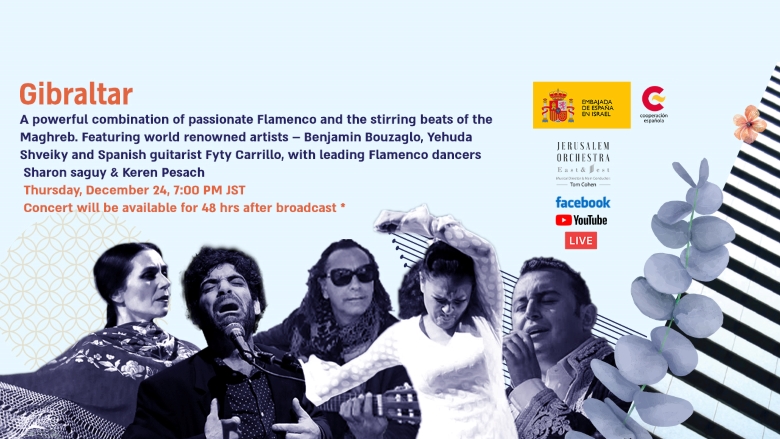
Spanish Music Concert auspiced by the Embassy of Spain Christmast eve, Thursday 24th of December
Greetings from the Embassy of Spain in Israel. we invite you to join us on Christmast eve, Thursday 24th of December, for a live online concert "GIBRALTAR" of Spanish Music offered by the fabulous Jerusalem Orchestra East & West. The music will be a mix of passionate flamenco, accompanied by the leading Israeli flamenco dancers Sharon Saguy and Keren Pessach and stirring beats of the Maghreb.
The concert will begin at 19.00 and can be viewed on the Facebook page of the Embassy of Spain in Israel:
https://www.facebook.com/EmbEspIsrael
Join our live broadcast! this Thursday - a special show by the Jerusalem Orchestra East & West, under the auspices of the Embassy of Spain in Israel, exclusively on our Facebook page -
"Gibraltar"
A powerful combination of passionate Flamenco and the stirring beats of the Maghreb. Featuring world renowned artists – Benjamin Bouzaglo, Yehuda Shveiky and Spanish guitarist Fyty Carrillo, with leading Flamenco dancers Sharon Sagie & Keren Pesach.
Please feel free to share this announcement with anyone who may be interested.
Best Wishes and Merry Christmas,
Embassy of Spain in Tel Aviv
ISRAEL
